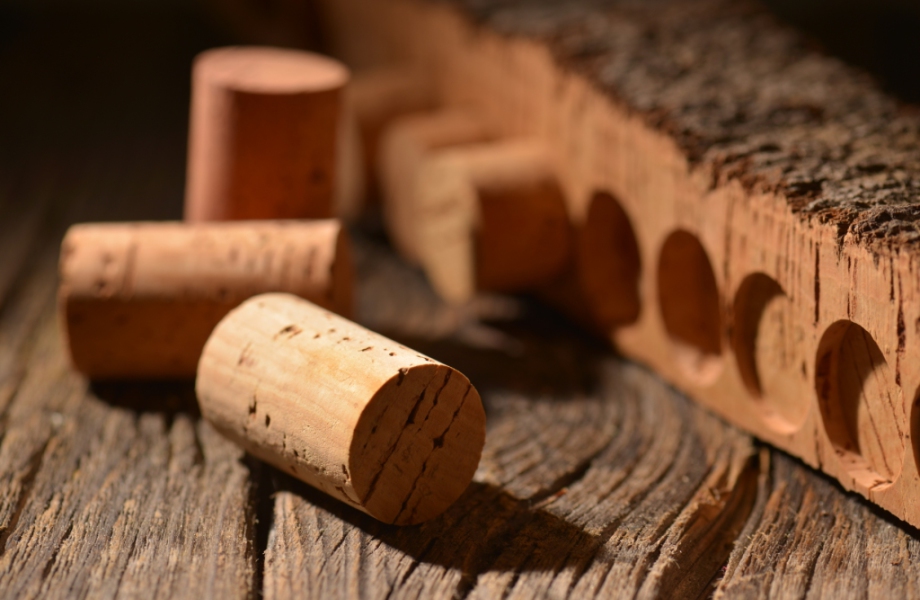
From Forest to Bottle
The production process begins in the forest with the harvest. With the use of an axe and precise incisions, the tree is carefully "stripped" of the bark. The first selection is made in the forest where cork planks which are not suitable for the production of corks, are discarded. Following the harvest, the cork planks are transported to the production site and left to season outside for about 12 months in the open air. Water, sun and wind are the optimal processes that favour a complete seasoning. To enable traceability, each lot is registered indicating forest or property, quantity and year of harvest.
When the cork is fully seasoned, the cork planks are immersed in clean boiling water for at least an hour. This procedure cleans the cork, extracts soluble substances, increases thickness and improves flexibility and elasticity. Once boiled, the cork planks are left to dry and stabilize for no longer than 48 hours. During this stage, the cork planks flatten and reach a homogeneous consistency and humidity, making them possible to cut. The planks are divided according to their thickness, visual aspect and future use; any planks with defects are discarded.
The cork planks are sliced into strips, slightly wider (slicing) than the length of the corks to be produced. Experts choose where to cut the cork strips to extract the best possible corks. The strips of cork are then perforated (punching) by a semi-automatic machine, slightly greater than the diameter of the cork. By-products are ground to manufacture cork granules for the production of technical corks. Then the corks are rectified to achieve the established dimensional specifications; the ends are trimmed and the bodies polished giving the surface a smooth finish. The corks are then washed to ensure cleanliness and disinfection. They can be washed with clean water and paracetic acid, which preserves the natural colour, or with clean water and hydrogen peroxide, which lightens the natural colour giving the cork a white finish. Immediately after washing, the corks are dried to remove any excess moisture. The corks are finally stored in well-ventilated, clean and odourless warehouses.
Corks are selected and separated into quality classes according to their visual aspect. The less porous the cork, the higher the quality. The first selection is made by optoelectronic readers. The second selection is made manually by experts to remove corks with defects or any which have been incorrectly classified in the first selection. In this way we obtain a very accurate classification.
The corks are customized according to the client's request together with our identification logo and production lot number which ensures traceability. Despite the use of modern inking methods, our company continues to use the traditional method of fire-branding to preserve the integrity of the natural product.
The corks are dusted to remove any residual cork dust which has formed during the production process. They are then treated on the surface with a layer of silicone lubricant to facilitate the insertion and extraction from the bottle neck and to improve its sealing properties. The corks are counted, packed in vacuum-packed polyethylene bags and sanitised with sulphur dioxide (SO2) to block microbiological proliferation. The bags are then placed in boxes or raffia bags and a label is attached indicating cork type, lot number, quantity, branding and sanitizing treatment.

